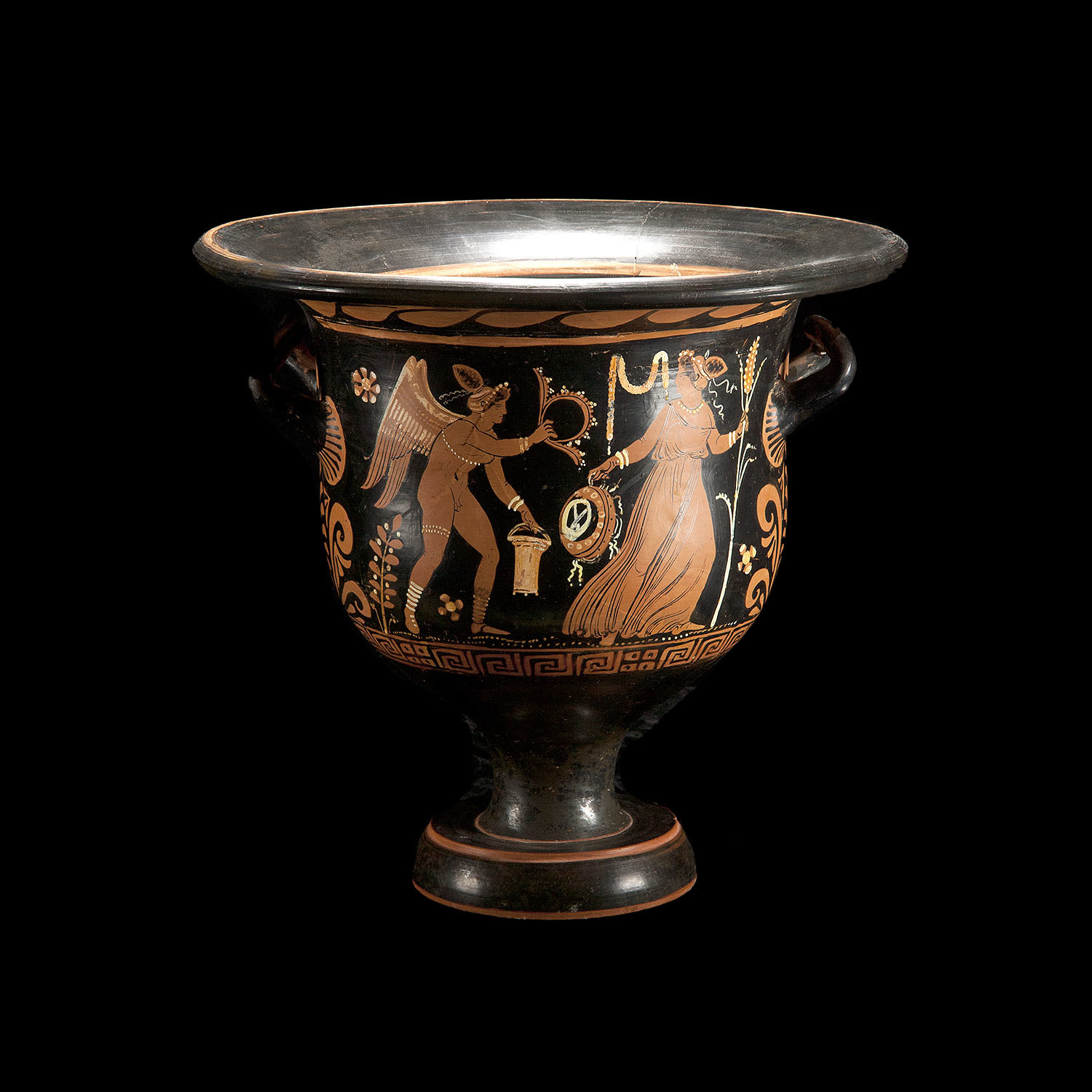Tenchi
Member
- Oct 10, 2022
- 3,517
- 1,727
Matthew 22:32
32 I am the God of Abraham, and the God of Isaac, and the God of Jacob?
God is not the God of the dead, but of the living.
In our modern age false teachings abound. Such teachings have always plagued the Church, but it seems to me they have proliferated wildly in the last forty years or so. The internet hasn't helped stem the tide of these erroneous teachings, that's for sure. Among the many odd "winds of doctrine" blowing about the Church today and catching up the biblically-illiterate, spiritually-immature and those who have little or no hermeneutical system is the idea that when a person's body dies, their soul returns to God as an undifferentiated "animating energy" subsumed into Him until the Final Resurrection when the dead are reconstituted as persons. In my experience, until recently, this thinking was held pretty exclusively by adherents to the Jehovah's Witnesses cult. Unfortunately, a growing number of professing Christians are taking up this false doctrine, encouraging fellow believers to adopt it. Even on this subforum there are some confidently espousing this error. So, I'm going to offer the biblical facts of the matter and help counter the spread of this false teaching. 32 I am the God of Abraham, and the God of Isaac, and the God of Jacob?
God is not the God of the dead, but of the living.
Why have the majority of Christians held to the notion of an immortal soul that continues on beyond the death of their physical body? Is there any good biblical grounds for this belief? Yes, there is.
Luke 16:22-25
22 And it came to pass, that the beggar died, and was carried by the angels into Abraham's bosom: the rich man also died, and was buried;
23 And in hell he lifted up his eyes, being in torments, and saw Abraham afar off, and Lazarus in his bosom.
24 And he cried and said, "Father Abraham, have mercy on me, and send Lazarus, that he may dip the tip of his finger in water, and cool my tongue; for I am tormented in this flame."
25 But Abraham said, "Son, remember that you in your lifetime received your good things, and likewise Lazarus evil things: but now he is comforted, and you are tormented."
In this story, Jesus plainly described the transport of the souls of two dead men, one to torment in hell, the other to "Abraham's Bosom" where he was "comforted." Is there anything about Jesus' story that would require that it be read in a figurative way? No. Instead, Jesus' description of the destinations of both men is remarkably detailed but unadorned. His story has a straightforward, matter-of-fact quality quite unlike, say, the apostle John's mystical Revelation, or the Psalmist's symbolic poetry.
Jesus gives the names of the two men in his account and even tells of one of them speaking to Abraham. These are strange elements of a story, if it is meant to be entirely symbolic. Why give specific names to figures who are merely symbols? What purpose could the conversation between the Rich Man and Abraham serve if it is entirely non-literal? As well, Jesus offered no explanation of the story, like he did for the Sower and the Seed parable, for example. Surely, if the story of Lazarus and the Rich Man is totally symbolic, if the story is completely fictional and there is no experience after death of hell or paradise, the story warranted some explanation! But Jesus went on to speak of other things, giving no hint that what he had just described of the afterlife was controversial or confusing.
There are no other parables Jesus told in which he referred to entirely fictional things, or circumstances. He spoke in his parables only of real, mundane and familiar situations and objects - weddings, lost coins, sheep and shepherds, servants and masters, wineskins, and so on - never of fantastical ones. This was Christ's uniform practice in telling his stories and so it is perfectly reasonable to think that in the story of Lazarus and the Rich Man, he continued it. As has been pointed out already, the unadorned description of events in the tale has the character of a news report, not a fantastical, totally symbolic narrative.
Only if one has a pre-commitment to the false doctrine of the Jehovah's Witnesses, to the idea that the soul does not survive the death of the body, is one forced to impose a symbolic/fantastical construction upon Jesus' story; for if this is not done, this single story totally explodes the false belief of the JW's.
Mark 9:2-8
2 Six days later, Jesus *took with Him Peter and James and John, and *brought them up on a high mountain by themselves. And He was transfigured before them;
3 and His garments became radiant and exceedingly white, as no launderer on earth can whiten them.
4 Elijah appeared to them along with Moses; and they were talking with Jesus.
5 Peter *said to Jesus, "Rabbi, it is good for us to be here; let us make three tabernacles, one for You, and one for Moses, and one for Elijah."
6 For he did not know what to answer; for they became terrified.
7 Then a cloud formed, overshadowing them, and a voice came out of the cloud, "This is My beloved Son, listen to Him!"
8 All at once they looked around and saw no one with them anymore, except Jesus alone.
The soul-subsumed-at-death bunch want to say that for this short time with Christ on the "high mountain," Elijah and Moses were reconstructed. I assume, according to this view, that they were then deconstructed again to be reformed a third time at the Final Resurrection. Of course, this must be read into the account, not drawn out of it. The principle of Occam's Razor, however, urges the thoughtful person not to multiply explanations unnecessarily and warns that doing so is a sign of faulty reasoning. So, then, the simpler (and thus more reasonable) understanding of the event above is that Elijah and Moses were already in existence, merely transported (as opposed to reconstituted and transported) to speak with Christ of his soon-coming departure (Luke 9:31), then returning to their former location in Paradise (a la, Lazarus in Christ's story), as God determined they should. Nothing in the account at all prevents such an understanding of it.
In considering what happens to the soul after death of the body, Elijah and Moses, then, demonstrate some important things: They were distinct, discernible entities, visible to the eye, who could speak and were (presumably) clothed; they could move from one location to another, appearing and disappearing instantly. This all accords well with Christ's story of Lazarus and the Rich Man and also with Revelation 6:9-11:
9 When the Lamb broke the fifth seal, I saw underneath the altar the souls of those who had been slain because of the word of God, and because of the testimony which they had maintained;
10 and they cried out with a loud voice, saying, "How long, O Lord, holy and true, will You refrain from judging and avenging our blood on those who dwell on the earth?"
11 And there was given to each of them a white robe; and they were told that they should rest for a little while longer, until the number of their fellow servants and their brethren who were to be killed even as they had been, would be completed also.
Here, martyrs of the faith cry out God for justice, urging Him to judge and avenge their murder. Are these martyrs mere symbols? Is this entire narrative fictional? This seems very unlikely for a number of reasons:
- Of what would the martyrs crying out be symbolic?
- Why so specific a description of the cause of their being killed (because of the word of God, and because of their testimony) if they are mere symbols?
- Why, if the martyrs are just symbolic of something else, are they told that others of "their fellow servants and their brethren" must also be killed? Of what would these others be symbolic? Why would making these other yet-be-martyred martyrs mere symbols be preferable to understanding them to be actual, literal martyrs of the faith?
- Why would making the passage entirely figurative be superior to a straightforward, literal understanding of it? Does the passage actually prevent such a reading? Not at all. Much of the Revelation of John is not symbolic. John himself, for example, is not a symbol, though he is involved in the events of the Revelation he described. God and Christ, too, in the Revelation are not figurative of other things. And so o on.
These and other questions seem to me to make the passage from Revelations 6 above very problematic if it is read symbolically. Instead, the passage has the "ring of the real," the flavor of actual beings, saying actual things, to an actual God. These beings, though separated from their physical bodies through being martyred, have not ceased to exist. They have not been subsumed into God as mere "life-energy" but have remained discrete, living entities, with voices and forms that are clothed in robes, able to desire justice, aware of others and the passage of time, and so on. John's description of these martyred brethren conforms very well to Jesus' story of Lazarus and the Rich Man, and to the account of the Transfiguration of Christ.
Continued below.






 Bible) if they speak not according to this word, it is because there is no light in them
Bible) if they speak not according to this word, it is because there is no light in them